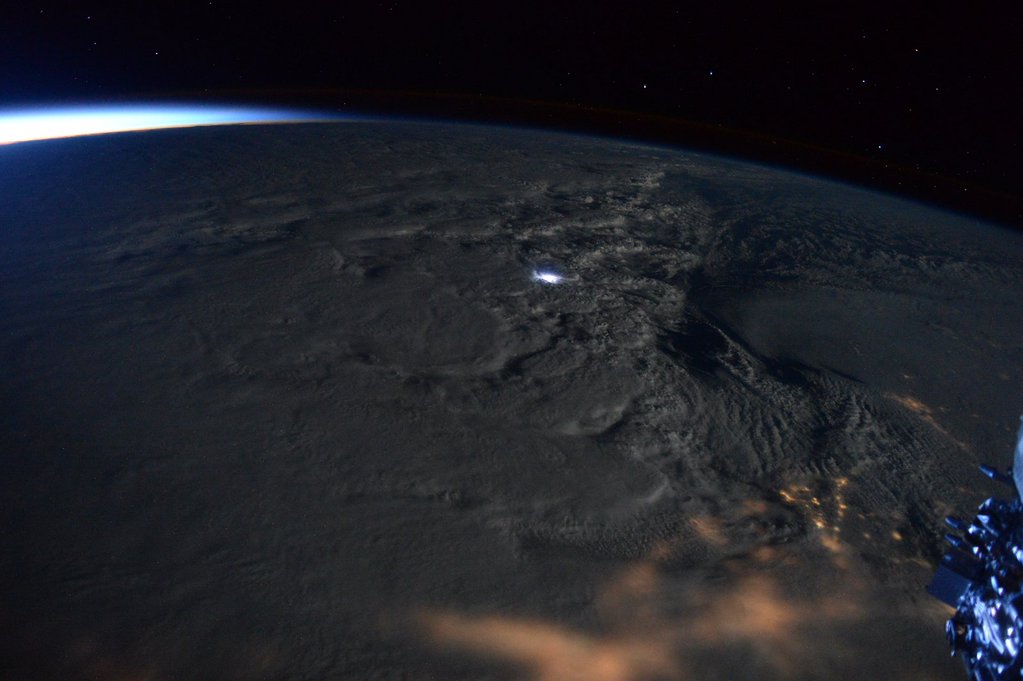Astronaut in Space Spots Rare Thundersnow in Blizzard Over Eastern US (Photo)

As the epic winter storm Jonas bore down on the U.S. East Coast this morning (Jan. 23), astronaut Scott Kelly snapped a series of photos of the storm's evolution from orbit, including one that catches a rare view of "thundersnow."
Yesterday, NASA and the National Oceanic and Atmospheric Administration (NOAA) tracked the storm by satellite as it developed, and now NASA's furthest human outpost — the International Space Station — has reported back, too, via Twitter. [See more photos of the winter storm]
NASA astronaut Scott Kelly's first post on Twitter, in the early morning, revealed the East Coast's city lights peeking out from the veil of the snowstorm:
An hour later, he posted the blizzard passing over Chicago:
Scott Kelly is orbiting the Earth along with fellow U.S. astronaut Tim Kopra and British astronaut Tim Peake, plus cosmonauts Mikhail Kornienko, Sergey Volkov and Yuri Malenchenko, where they can watch the storm develop from afar.
Kelly's hometown — also the hometown of his twin brother Mark Kelly, a veteran astronaut — has a much closer view: West Orange, New Jersey is one of many towns seeing massive snowfall from the storm.
Email Sarah Lewin at slewin@space.com or follow her @SarahExplains. Follow us @Spacedotcom, Facebook and Google+. Original article on Space.com.
Get the Space.com Newsletter
Breaking space news, the latest updates on rocket launches, skywatching events and more!
Join our Space Forums to keep talking space on the latest missions, night sky and more! And if you have a news tip, correction or comment, let us know at: community@space.com.

Sarah Lewin started writing for Space.com in June of 2015 as a Staff Writer and became Associate Editor in 2019 . Her work has been featured by Scientific American, IEEE Spectrum, Quanta Magazine, Wired, The Scientist, Science Friday and WGBH's Inside NOVA. Sarah has an MA from NYU's Science, Health and Environmental Reporting Program and an AB in mathematics from Brown University. When not writing, reading or thinking about space, Sarah enjoys musical theatre and mathematical papercraft. She is currently Assistant News Editor at Scientific American. You can follow her on Twitter @SarahExplains.









